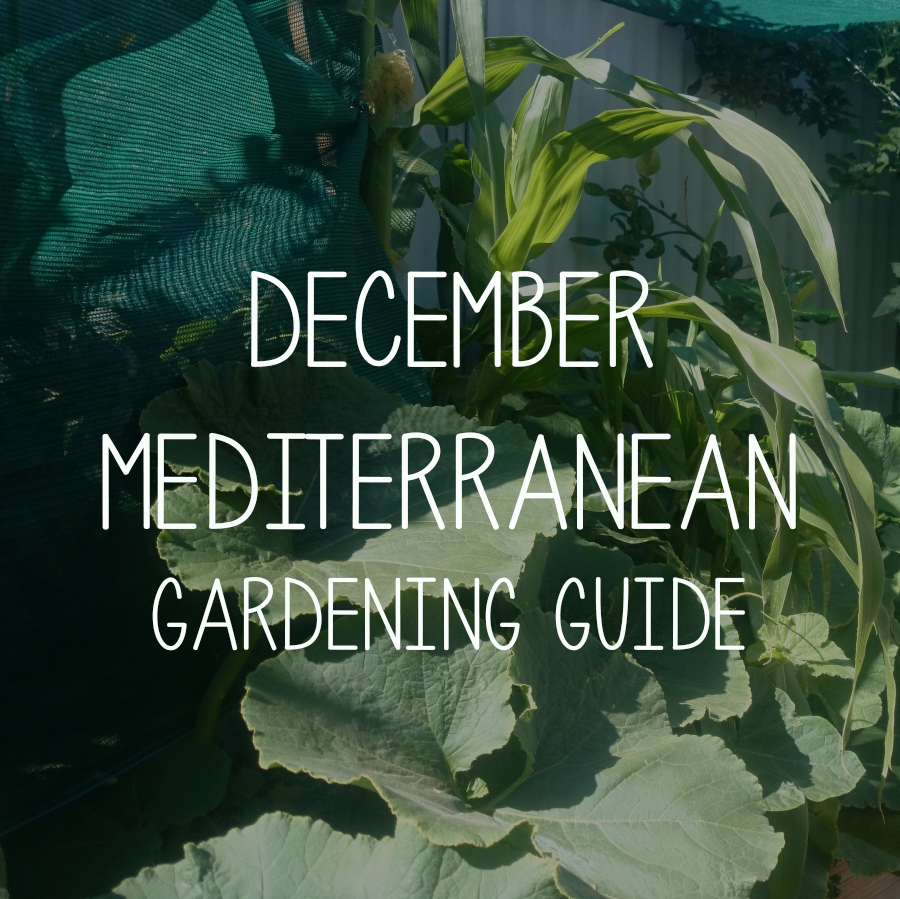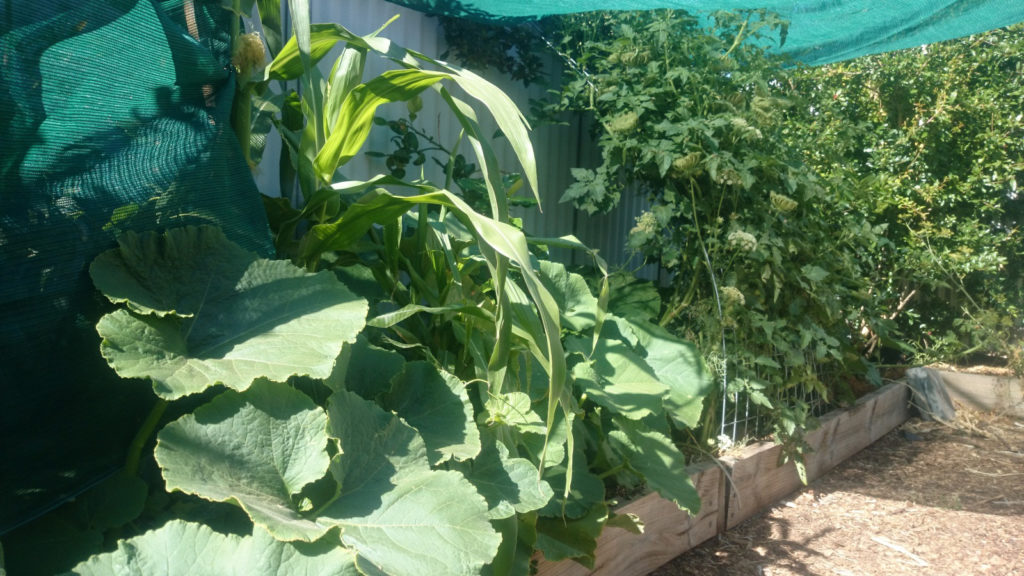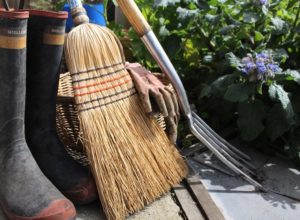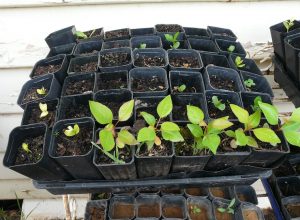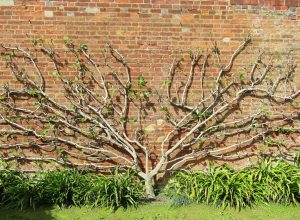December Gardening Guide – Mediterranean Climate
with Pip’s Adelaide correspondent Nadja Osterstock
Summer has started early here, with some serious hot spikes, strong winds and a devastating early bushfire north of Adelaide. In suburban gardens, water, shade and timing are everything.
Fruit ripens quickly in the heat and needs steady watering and close attention to be picked at its peak – or earlier if birds threaten to nab it first. Seed raising trays and newly planted seedlings need more shade and more frequent watering, and seedlings need to be hardened off – that is, gradually acclimatised to their garden bed positions, e.g. by placing their pots near the planting position, then planting them out in the evening or during a milder spell. Shadecloth or old sheets positioned to reduce midday to afternoon sun exposure can make a huge difference to plants’ survival and growth, as well as reducing moisture loss from wind – but it’s important to allow enough ventilation (especially overnight and on cooler days) to mildew-prone plants such as zucchini and grapes.
Planting
Make the most of the heat with fast-growing vegetables like climbing beans, melons, pumpkins and zucchini, as well as repeat plantings of tomato and corn. Use taller climbing vegetables like tomatoes and cucumber on tall frames, teepees or arches of steel mesh to partially shade leafy greens like lettuces and silverbeet. Although coriander and baby spinach are still tempting, they are inclined to bolt to seed in the heat, so more frequent small plantings and longer shade periods help to maximise success.
All this warmth along with the moisture we supply supports a plethora of insects, some useful and others less so. Spiders and birds amongst the fruit trees help to keep them in balance, as do lizards. Make sure these helpers have a cool drink at hand.
If you have evergreen fruit trees and vines that still need to be planted out, take care to prepare the soil, water well and shelter them while they settle in. Those planted now won’t have such a well prepared root system as spring-planted trees, so will be more vulnerable to heatwaves.
Harvesting
Summer vegies are getting moving now – check zucchinis, beans and tomatoes daily. While vine-ripened tomatoes are a beautiful thing, rats think so too – picking when they start to colour and ripening on a kitchen bench can prevent those visitors from settling in for the season. Cape gooseberries are ripe when their lantern-shaped cases are papery-dry and the berry inside is fat and golden. The plants can be cut back mid-season when they have become leggy and unattractive, and with a deep watering they will start to bush out and produce again.
The stone fruits are also ripening – sequence will depend on specific varieties, but cherries are now being picked, we have apricots and the peaches will be along soon. Jackie French observes that most native fruits are more sour than introduced fruits and that this might explain why native birds like to start eating our fruit before it is sweet enough for us to pick! So it pays to get nets up early. White bird nets are easier for birds to see than darker colours, and by either hoisting them over arched pipes or stretching them tight over the tree canopy, there are fewer loose folds for birds to get caught in. Draw the base of the net in close around the trunk, or around individual branches if the trees are too big to net as a whole. If there is a gap, birds can easily get in and then struggle to find their way back out. Nets can be tied with baling twine around the base or secured with clothes pegs (pegs do get caught up in the nets, but they are usually quite reusable there the following year).
The spring strawberry crop may have slowed down now. If your plants have started putting on more runners and less fruit, sit extra pots around them to catch the runners. There’s no need to plant them into the potting mix – they will settle on the surface and start to put down roots. When the stem has toughened and darkened and roots are well established, the new plants can be mulched and cut loose from the parent. These will start to fruit well after 1-2 years, by which time the parent plant’s productivity is likely to be in decline.
Many seeds are now ready for harvesting – e.g. parsley, coriander, celery, parsnip, beetroot, silverbeet, spinach. Look for dry, papery seed heads. Break them off into a paper bag and shake or rub the seed heads to release the seeds. For lettuces, the seeds are ready to harvest when the yellow flowers have finished and been replaced by dry heads topped with whitish fluff. Shake into a paper bag. Store all seeds in a cool, dry place and replant as needed – for many of these plants, germination rates are best in the first year.
Maintenance
- Check on irrigation systems – if the garden has dry patches there may be a blockage or break.
- Keep turning and watering compost – a good balance of air and moisture cranks it out faster!
- Beware of overhead watering those vegetables that don’t like it – e.g. zucchini, tomato, cucumber
- Summer prune stone fruit trees just after harvest – more on that as summer progresses!
Featured Permaculture principle: Creatively use and respond to change
I can think of no better example of this principle right now than the Sampson Flat Garden Revival facebook page, set up after a major fire in the Adelaide hills this January to do something positive in the face of devastation. In the wake of further bushfires – particularly the recent Pinery fire – it has expanded its mission and become SA Bushfire Garden Revival. This is a community initiative supporting residents who have experienced bushfires to rebuild their gardens – please visit their page to learn more and to donate tools, plants, materials or practical help.
Nadja Osterstock – findNadja’s Garden on facebook, email nadjasgarden@gmail.com,
ph. 0410 636 857, website and blog at www.nadjasgarden.com.au

